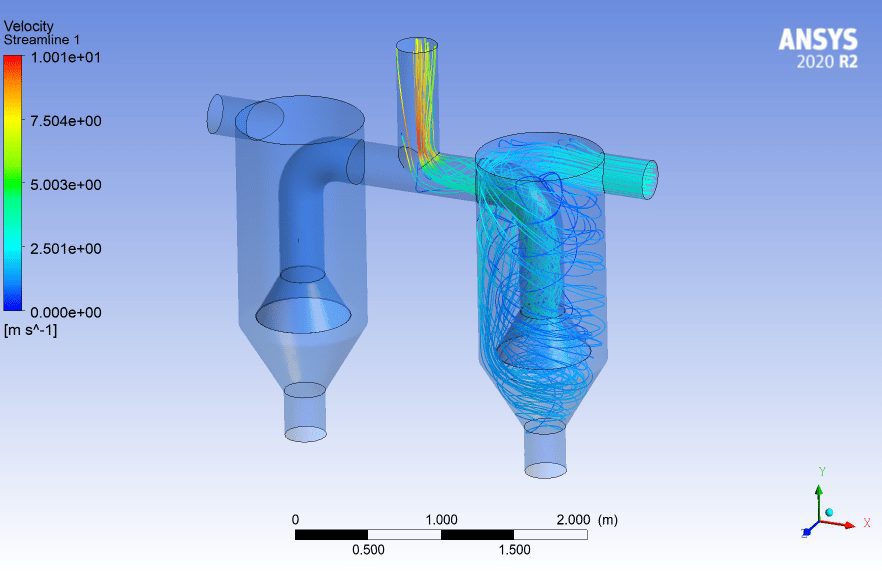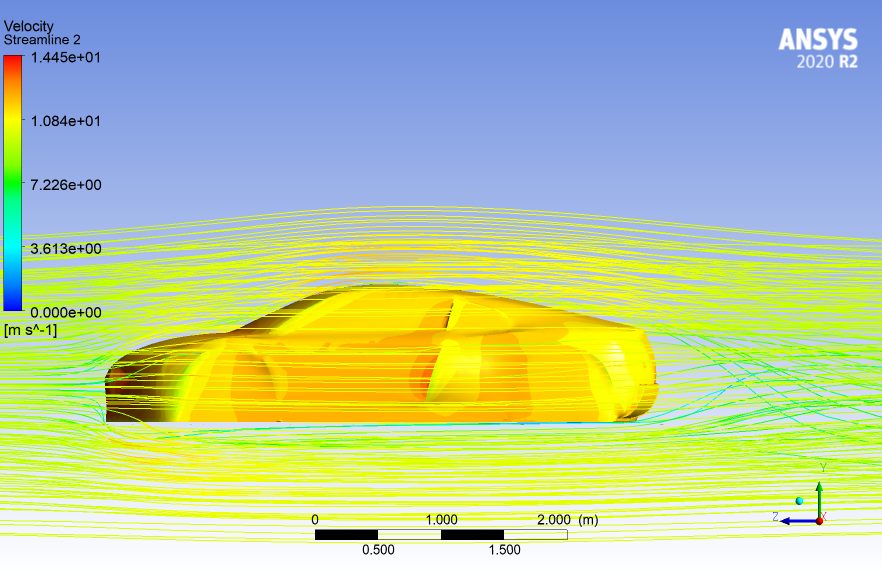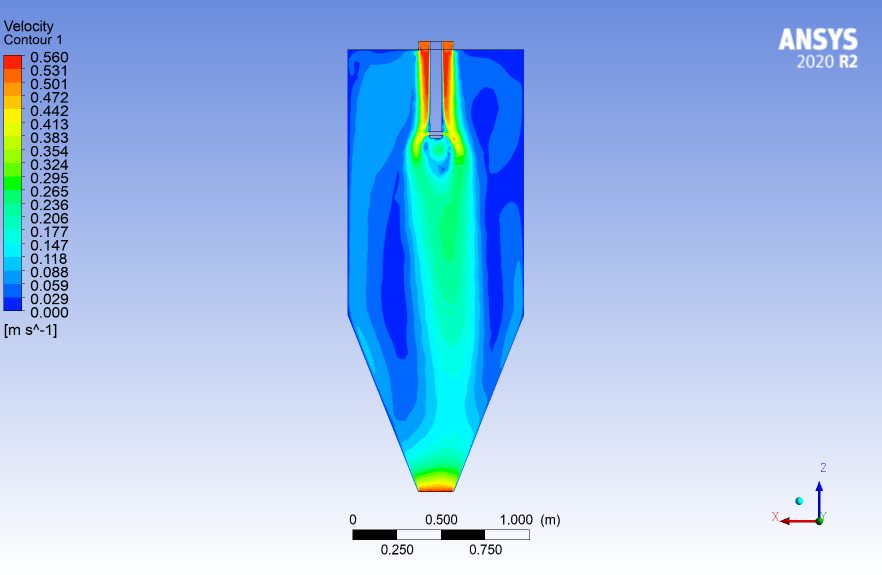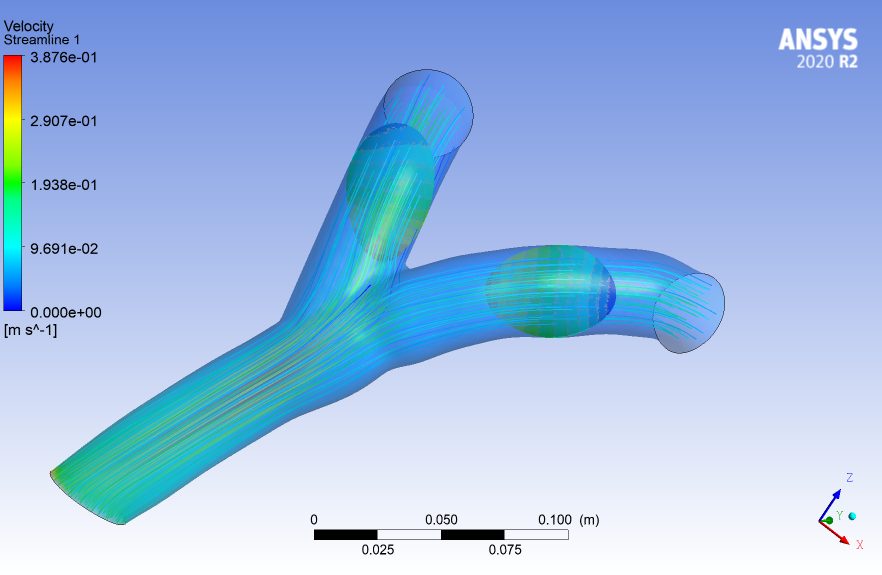fluent simulation: In today’s rapidly evolving technological landscape, simulation plays a vital role in various industries, enabling professionals to model, analyze, and predict real-world scenarios. One prominent type of simulation, known as Fluent Simulation, has gained substantial importance in fields such as engineering, aerospace, and medicine. In this article, we will explore Fluent Simulation, its applications, importance, and the role it plays in shaping the future of multiple industries.

What is Fluent Simulation?
Fluent Simulation is a profound and versatile computational fluid dynamics (CFD) software solution developed by Ansys. In essence, CFD is the science of studying fluid dynamics – encompassing fluid flow, heat transfer, and associated phenomena. What sets Fluent Simulation apart is its exceptional ability to simulate, analyze, and predict fluid behavior in a multitude of real-world scenarios. This is accomplished by breaking down the complex fluid dynamics equations into manageable components and using computational algorithms to solve them.
The result? A powerful tool that provides engineers, scientists, and researchers with a unique perspective on how fluids interact with structures and environments. Fluent Simulation offers a virtual laboratory where professionals can experiment with different conditions, evaluate designs, and make informed decisions. Whether it’s optimizing aerodynamics, enhancing energy efficiency, or advancing medical device design, this software’s capabilities are a cornerstone of innovation across various industries.
The Importance of Fluent Simulation in Various Fields
In an era driven by technological advancements, Fluent Simulation emerges as a pivotal asset in numerous fields. Its importance resonates across diverse industries, each reaping its benefits. Consider the world of engineering, where optimizing designs is crucial. Fluent Simulation facilitates the analysis of complex systems, such as automotive components or the structural integrity of buildings, under various fluid dynamics scenarios. It empowers engineers to enhance fuel efficiency, reduce environmental impacts, and ensure structural stability.

In the aerospace industry, this tool takes center stage, enabling engineers to fine-tune aircraft aerodynamics. Through meticulous simulations, aircraft performance, fuel efficiency, and safety are optimized. Meanwhile, the medical field harnesses Fluent Simulation to design and refine medical devices by studying the behavior of fluids within the human body. This versatile software provides insights that lead to the development of safer and more effective medical equipment. Across these and other sectors, Fluent Simulation’s influence is undeniable, making it a driving force behind innovation.
How Fluent Simulation Works
At the heart of Fluent Simulation lies the intricate process of numerical modeling. It’s a methodical approach to unraveling the complexities of fluid dynamics equations. The first step is defining the computational domain, which specifies the area of interest for the simulation. This domain can range from a car’s aerodynamic profile to the airflow within a medical device. The next crucial component is the mesh, which divides the computational domain into discrete elements, enabling the software to analyze fluid behavior at a granular level.
The heart of Fluent Simulation lies in its solvers, which serve as the engine behind the simulations. These solvers tackle the governing equations that describe fluid flow, heat transfer, and associated phenomena. By employing numerical methods, Fluent Simulation solves these equations for each element of the mesh, providing a comprehensive understanding of how fluids interact with structures and environments. Finally, the software offers post-processing capabilities, which allow users to visualize and analyze the simulation results. This step-by-step process equips engineers, scientists, and researchers with a robust tool for comprehending and predicting fluid behavior under different conditions.

Key Components of Fluent Simulation
Fluent Simulation boasts a sophisticated array of key components, each integral to its functioning as a comprehensive simulation tool. First and foremost is its user interface, designed for user-friendliness and ease of operation. It allows users to set up and run simulations efficiently, making the software accessible even to those with limited simulation experience. Meshing tools come into play for defining the computational domain. This step is pivotal, as it involves breaking down the domain into a grid of discrete elements known as mesh cells. The quality and refinement of the mesh have a direct impact on the accuracy and reliability of the simulations.
The solvers in Fluent Simulation are the computational workhorses, responsible for solving the fluid dynamics equations. These solvers use numerical methods to calculate how the fluid flows, how heat is transferred, and how various phenomena are affected within the specified domain. Post-processing capabilities round out the package, enabling users to visualize the results and gain insights into the simulated scenarios. These components work in synergy to provide a comprehensive simulation experience, enabling engineers, scientists, and researchers to explore, analyze, and understand fluid behavior and heat transfer in a wide range of applications.
Applications of Fluent Simulation in Engineering
In the realm of engineering, Fluent Simulation serves as an invaluable tool for design and optimization. Its applications extend across a spectrum of engineering disciplines, and it plays a significant role in enhancing the efficiency and performance of various components. For example, in the automotive industry, Fluent Simulation enables engineers to delve into the intricacies of aerodynamics. By simulating the flow of air over a car’s body, they can optimize its design to reduce drag, enhance fuel efficiency, and improve overall performance.
In civil engineering, Fluent Simulation is employed to assess the structural integrity of bridges and buildings under different conditions, such as wind loads. This helps ensure that structures remain safe and stable. Additionally, in the energy sector, Fluent Simulation contributes to the development and optimization of power generation systems, making energy production more efficient and sustainable. These applications underscore the role of Fluent Simulation as a vital tool in the hands of engineers, enabling them to design, optimize, and innovate across various domains.

Fluent Simulation in Aerospace Industry
The aerospace industry represents one of the most prominent and demanding fields where Fluent Simulation plays a pivotal role. Aircraft design is a complex and multifaceted endeavor, and optimizing aerodynamics is critical. Fluent Simulation enables aerospace engineers to conduct in-depth analysis of airflow over aircraft surfaces, wings, and engines. By simulating the behavior of air around and within an aircraft, engineers can fine-tune design parameters to enhance performance, safety, and fuel efficiency.
This level of precision and control has a profound impact on the aviation sector. It contributes to the creation of aircraft that are not only more fuel-efficient but also safer and more environmentally friendly. In a world where aviation efficiency and sustainability are paramount, Fluent Simulation stands as a cornerstone of innovation, propelling the aerospace industry into the future.
Medical Applications of Fluent Simulation
The medical field has witnessed a remarkable fusion of technology and healthcare, with Fluent Simulation making significant inroads. It is increasingly used in the design and development of medical devices. One key area of application is the study of blood flow and other fluids within the human body. By simulating how blood moves through arteries, how air circulates in the lungs, or how medications disperse in organs, Fluent Simulation aids in the development of medical devices and treatments.
This can include the design of improved artificial organs, such as heart valves, that replicate natural blood flow dynamics. Fluent Simulation also contributes to the design of drug delivery systems, ensuring precise and targeted delivery of medications within the body. Furthermore, it plays a crucial role in surgical planning, helping doctors and surgeons visualize how procedures will affect blood flow and fluid dynamics within the body. All of these applications collectively enhance patient care, making medical devices and treatments more effective, safer, and tailored to individual patient needs.
Benefits of Fluent Simulation
The use of Fluent Simulation in various fields brings forth a host of compelling benefits that resonate across industries. First and foremost, it leads to a significant reduction in the costs associated with product development and testing. By allowing engineers and researchers to simulate and analyze real-world scenarios virtually, it minimizes the need for costly physical prototypes and experiments. This not only saves time and resources but also accelerates the development process. Secondly, Fluent Simulation results in improved product performance. Engineers can fine-tune designs and optimize various parameters, such as aerodynamics or heat transfer, to enhance the efficiency and effectiveness of products.
This leads to products that meet higher standards of quality and performance. Additionally, the use of Fluent Simulation contributes to environmental sustainability. By optimizing energy usage and reducing waste in various systems, it supports eco-friendly practices and helps reduce the ecological footprint of products and processes. In essence, Fluent Simulation is a driver of efficiency, cost-effectiveness, and sustainability, making it an indispensable tool for engineers, scientists, and researchers across diverse industries.

Challenges and Limitations of Fluent Simulation
Despite its immense potential, Fluent Simulation does come with its fair share of challenges and limitations. One of the primary challenges is the need for substantial computational resources. Simulating complex fluid dynamics requires a significant amount of computational power and memory, which can be costly and time-consuming. Additionally, setting up Fluent Simulation for specific applications can be complex and require expertise. Users need to have a deep understanding of fluid dynamics and the software itself to produce accurate results. Moreover, Fluent Simulation often entails a steep learning curve, making it less accessible to newcomers in the field.
Overcoming these challenges requires investment in hardware, software, and training. There are also limitations regarding the accuracy of simulations. While Fluent Simulation can provide highly valuable insights, it’s important to remember that all simulations are approximations of reality. Small inaccuracies can accumulate, and validation is essential to ensure that the results align with real-world observations. In sum, while Fluent Simulation offers immense benefits, users must be mindful of these challenges and limitations to make the most of this powerful tool.
Future Developments in Fluent Simulation
The future of Fluent Simulation is rife with exciting possibilities and innovations. One of the most significant advancements on the horizon is the utilization of high-performance computing (HPC). As computational power continues to surge, Fluent Simulation will be able to tackle even more complex problems, providing higher fidelity simulations and quicker results. Machine learning and artificial intelligence are also poised to play a pivotal role in the future of Fluent Simulation. These technologies can enhance the predictive capabilities of the software, making it even more powerful in analyzing and optimizing systems.
Automation will be another crucial facet of future developments. This will streamline the simulation process, making it more accessible to a broader audience. As software becomes more user-friendly and intuitive, professionals from various fields will be able to harness Fluent Simulation to address fluid dynamics challenges. Furthermore, Fluent Simulation will continue to find applications in interdisciplinary fields, further expanding its influence. Whether it’s in environmental sciences, sustainable energy, or advanced healthcare, the software is set to make meaningful contributions to a wide range of domains. The future of Fluent Simulation is marked by an evolution toward more powerful, accessible, and versatile simulations.

Case Studies: Real-World Applications
To truly understand the impact of Fluent Simulation, it’s crucial to explore real-world case studies that highlight its practicality and significance. One such case study involves the automotive industry, where Fluent Simulation has been instrumental in improving fuel efficiency. By simulating the airflow over a vehicle’s body and optimizing its aerodynamics, engineers have successfully reduced drag, leading to more fuel-efficient cars. In civil engineering, Fluent Simulation has been used to analyze and optimize the structural integrity of iconic bridges. By simulating various environmental conditions, engineers have made crucial decisions to ensure the safety and longevity of these structures.
In the medical field, Fluent Simulation has contributed to the design of advanced medical devices. By simulating blood flow in artificial organs, such as heart valves, designers have created devices that mimic natural physiological functions. These case studies demonstrate the tangible impact of Fluent Simulation across diverse industries, underlining its significance in innovation and problem-solving.
Conclusion
In conclusion, Fluent Simulation has emerged as a transformative force across a multitude of industries. Its applications extend from engineering, where it optimizes automotive designs and ensures structural stability, to the aerospace industry, where it refines aircraft aerodynamics for enhanced performance and safety. In the medical field, Fluent Simulation contributes to the development of life-saving medical devices by simulating fluid behavior within the human body. The benefits of Fluent Simulation are far-reaching, encompassing cost reductions, improved product performance, and a commitment to environmental sustainability.
Yet, it’s important to acknowledge the challenges and limitations, including the need for substantial computational resources and the necessity for expertise in setting up simulations. Looking ahead, the future of Fluent Simulation is marked by increased computational power, the integration of machine learning and automation, and broader interdisciplinary applications. The software continues to evolve, offering even more powerful and accessible tools for professionals across various fields. In a world driven by technological advancements, Fluent Simulation stands as a testament to the power of simulation and its ability to shape the future of innovation.



